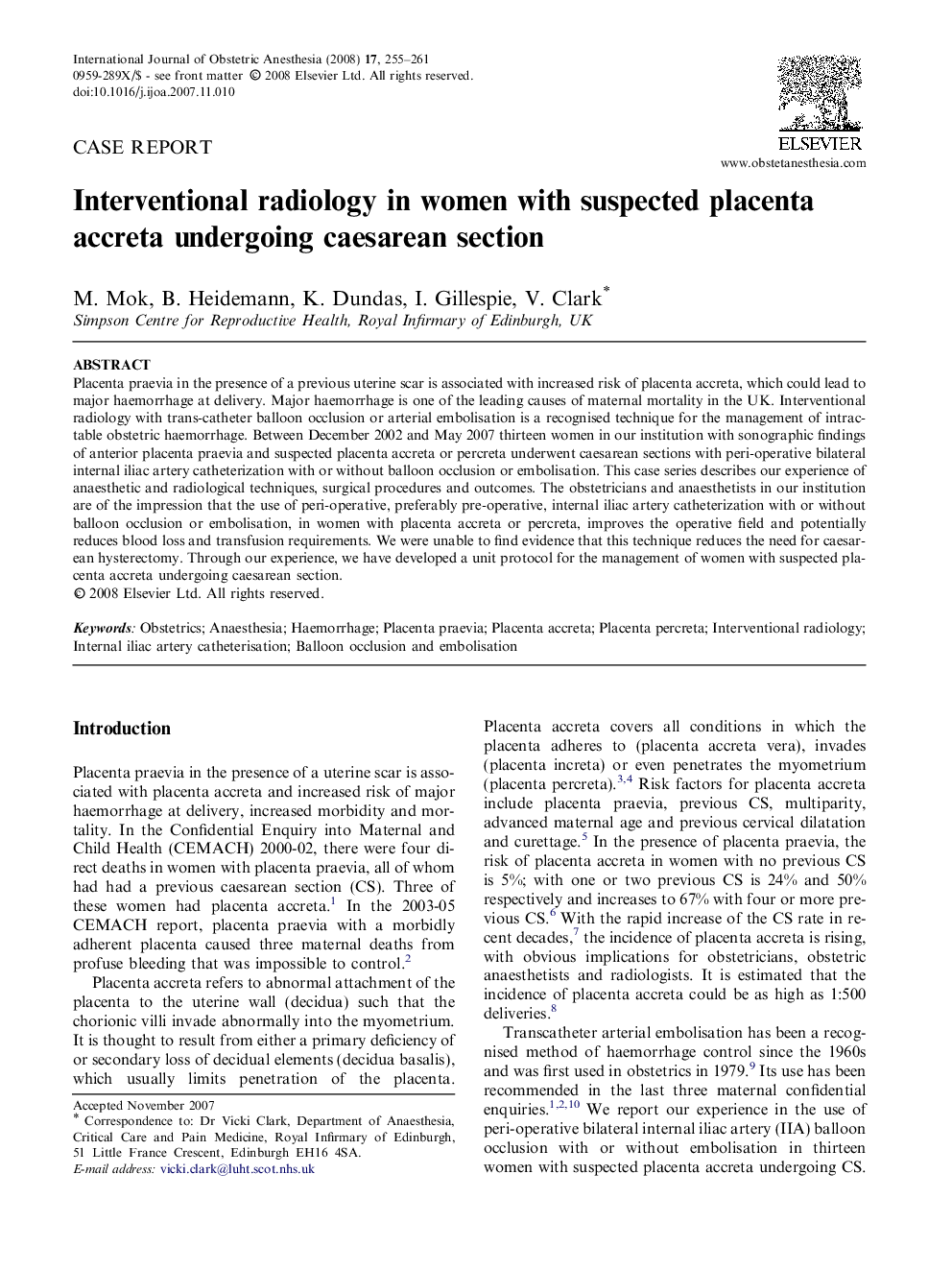| Article ID | Journal | Published Year | Pages | File Type |
|---|---|---|---|---|
| 2758468 | International Journal of Obstetric Anesthesia | 2008 | 7 Pages |
Placenta praevia in the presence of a previous uterine scar is associated with increased risk of placenta accreta, which could lead to major haemorrhage at delivery. Major haemorrhage is one of the leading causes of maternal mortality in the UK. Interventional radiology with trans-catheter balloon occlusion or arterial embolisation is a recognised technique for the management of intractable obstetric haemorrhage. Between December 2002 and May 2007 thirteen women in our institution with sonographic findings of anterior placenta praevia and suspected placenta accreta or percreta underwent caesarean sections with peri-operative bilateral internal iliac artery catheterization with or without balloon occlusion or embolisation. This case series describes our experience of anaesthetic and radiological techniques, surgical procedures and outcomes. The obstetricians and anaesthetists in our institution are of the impression that the use of peri-operative, preferably pre-operative, internal iliac artery catheterization with or without balloon occlusion or embolisation, in women with placenta accreta or percreta, improves the operative field and potentially reduces blood loss and transfusion requirements. We were unable to find evidence that this technique reduces the need for caesarean hysterectomy. Through our experience, we have developed a unit protocol for the management of women with suspected placenta accreta undergoing caesarean section.
